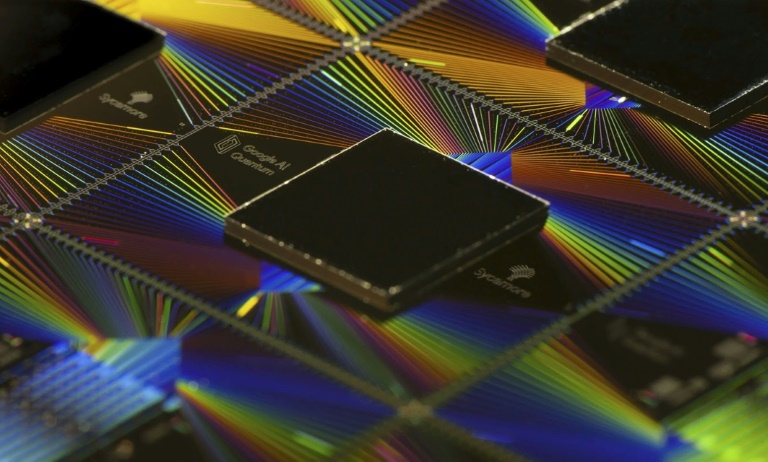Boosting quantum computing speed by cutting down on errors

Quantum computing has been touted as a revolutionary advance that uses our growing scientific understanding of the subatomic world to create a machine with powers far beyond those of conventional computers – Copyright AFP/File LUCA SOLA
Due to a novel approach to quantum error correction, usable and useful quantum computers could be available to industry by the end of 2024. A recent paper written by the hardware developer Alice & Bob and INRIA, a French national laboratory, proved some key overhead reductions, which would yield 100 high-fidelity logical qubits with as little as 1,500 physical qubits, can be achieved.
Several companies now operate computers with over 1,000 physical qubits. A quantum computer of this scale has the potential to achieve quantum supremacy over classical computers.
In the research breakthrough, scientists demonstrate low-density parity-check (LDPC) codes, a new type of quantum error correction architecture, for cat qubits could encode 100 highly reliable logical qubits with as little as 1,500 physical qubits, establishing feasible path to useful business applications. LDPC codes are a class of efficient error correction codes that reduce hardware requirements to correct errors occurring in information transfer and storing.
In addition, Cat qubits already enable logical qubit designs that require significantly fewer qubits, due to their inherent protection from bit flip errors.
Hence, the impact is to reduce hardware requirements for useful quantum computers. This advances previous research on LDPC codes by enabling the implementation of gates as well as the use of short-range connectivity on quantum chips. The prototype machine has been named Helium 1.
The resulting reduction in overhead required for quantum error correction will allow the operation of 100 high-fidelity logical qubits (with an error rate of 10-8) with as little as 1,500 physical cat qubits.
This is important since over 90 percent of quantum computing value depends on strong error correction, which is currently many years away from meaningful computations.
The new architecture using LDPC codes and cat qubits could run Shor’s algorithm with less than 100,000 physical qubits, a 200-fold improvement over competing approaches’ 20 million qubit requirement.
Shor’s algorithm is a quantum algorithm for finding the prime factors of an integer. It was developed in 1994 by the mathematician Peter Shor and it is a quantum algorithm to enable the demonstration of superpolynomial speedup compared to best known classical (that is, non-quantum) algorithms. In other words, it is useful for assessing the potential of quantum machines.
The theoretical work is available on arXiv.
Boosting quantum computing speed by cutting down on errors
#Boosting #quantum #computing #speed #cutting #errors





